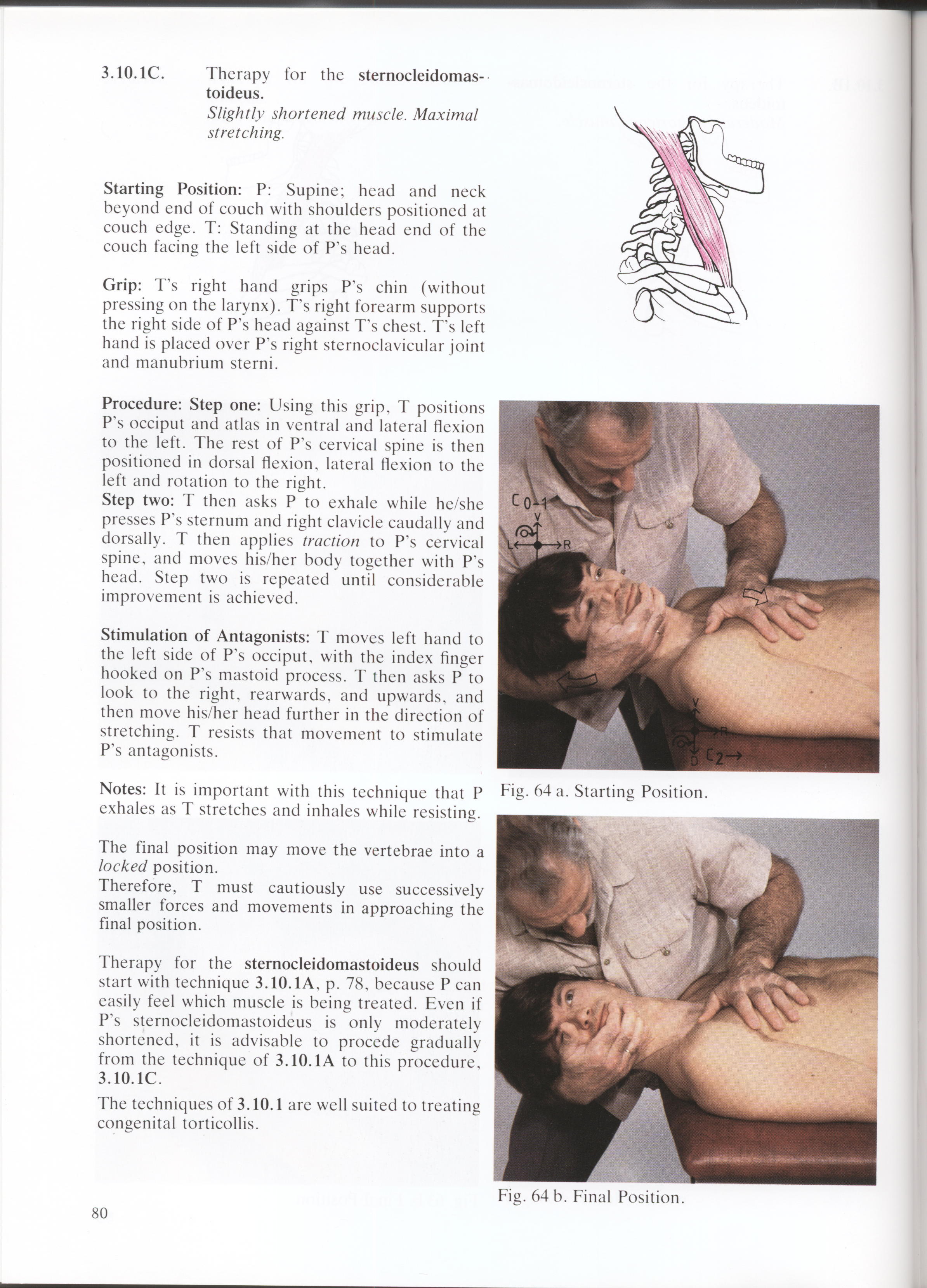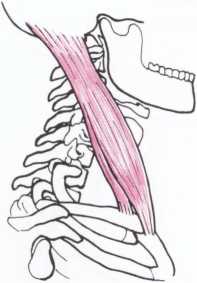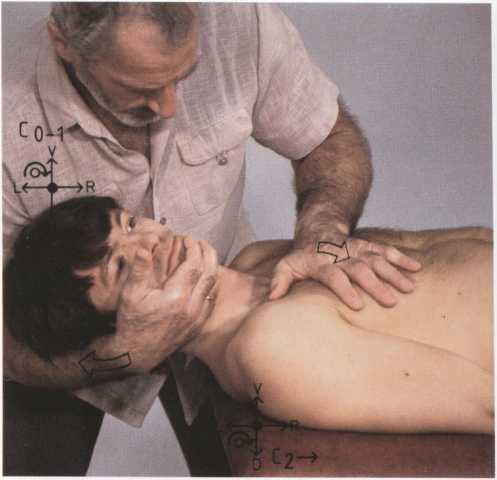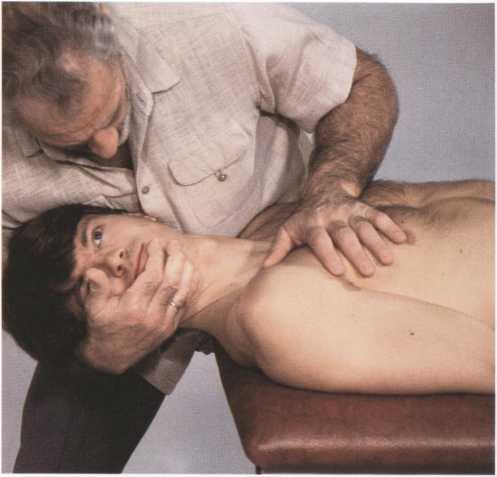80 (191)

3.10.1C. Therapy for the sternocleidomas-toideus.
Slightly shortened muscle. Maximal stretching.
Starting Position: P: Supine; head and neck beyond end of couch with shoulders positioned at couch edge. T: Standing at the head end of the couch facing the left side of P's head.
Grip: Ts right hand grips P's chin (without pressing on the larynx). Ts right forearm supports the right side of P’s head against T’s chest. Ts left hand is placed over P’s right sternoclavicular joint and manubrium sterni.
Procedurę: Step one: Using this grip, T positions P’s occiput and atlas in ventral and lateral flexion to the left. The rest of P's cervical spine is then positioned in dorsal flexion. lateral flexion to the left and rotation to the right.
Step two: T then asks P to exhale while he/she presses P’s sternum and right clavicle caudally and dorsally. T then applies traction to P's cervical spine, and moves his/her body together with P's head. Step two is repeated until considerable improvement is achieved.
Stimulation of Antagonists: T moves left hand to the left side of P’s occiput, with the index linger hooked on P's mastoid process. T then asks P to look to the right, rearwards, and upwards, and then move his/her head further in the direction of stretching. T resists that movement to stimulate P’s antagonists.
Notes: It is important with this technique that P exhales as T stretches and inhales while resisting.
The finał position may move the vertebrae into a locked position.
Therefore, T must cautiously use successively smaller forces and movements in approaching the finał position.
Therapy for the sternocleidomastoideus should start with techniąue 3.10.1 A. p. 78, because P can easily feel which muscle is being treated. Even if P s sternocleidomastoideus is only moderately shortened, it is advisable to procede gradually from the techniąue of 3.10.1 A to this procedurę, 3.10.1C.
The techniąues of 3.10.1 are well suited to treating congenital torticollis.


Fig. 64 a. Starting Position.

Fig. 64 b. Finał Position.
80
Wyszukiwarka
Podobne podstrony:
78 (190) W 3.10.1A. Therapy for the sternocleidomas-toideus. Very shortened muscle. Starting Positi
79 (188) 3.10. IB. Therapy for the sternocleidomas-toideus. Moderately shortened muscle. Starting Po
81 (175) 3.10.2A. Therapy for the scalenus anterior and medius. Starting Position: P: Supine; head a
82 (183) 3.10.2B. Therapy for the scalenus anterior and medius. AIternative grip. Starting Position:
84 (171) 3.10.4A. Therapy for the subclavius. P sitting. Starting Position: P: Sitting or standing;
85 (165) 3.10.4B. Therapy for the subclavius. P lying on sicie. Starting Position: P: lying on left
47 (397) 2.12.2C. Therapy for the levator scapulae. When P’s shoulder is painful. Starting Position:
34 (543) 1 2.3.5B. Therapy for the rhomboidei major and minor. P lying on side. Starting Position: P
36 (520) 1 1 2.3.6B. Therapy for the triceps brachii, long head. P lying on side. Starting Position:
60 (279) 3.3.10. Therapy for the extensor carpi ulnaris. Starting Position: P: Supine; arm flexed ap
78 (191) 5.2.2. Therapy for the interossei palmares. (Stretching of interosseus palmaris IV shown.)
80 (192) 5.3.1 Therapy for the flexor pollicis brevis. Starting Position: P: Supine or sitting; elbo
21 (955) 2.2.2B. Therapy for the pectoralis major, sternocostal part. Unilateral stretching. St
56 (314) 3.3.6. Therapy for the extensor indicis. Starting Position: P: Supine; forearm flexed and f
57 (309) 3.3.7. Therapy for the extensor digitorum communis. (Middle finger only). Starting Position
58 (288) 3.3.8. Therapy for the extensor digiti minimi. Starting Position: P: Supine; arm flexed app
59 (281) 3.3.9. Therapy for the supinator. Starting Position: P: Supine; arm flexed approx-imately 9
61 (266) 3.3.11. Therapy for the flexor carpi ulnaris. Starting Position: P: Supine; arm flexed appr
62 (264) 3.3.12. Therapy for the flexor carpi radialis. Starting Position: P: Supine; arm flexed app
więcej podobnych podstron